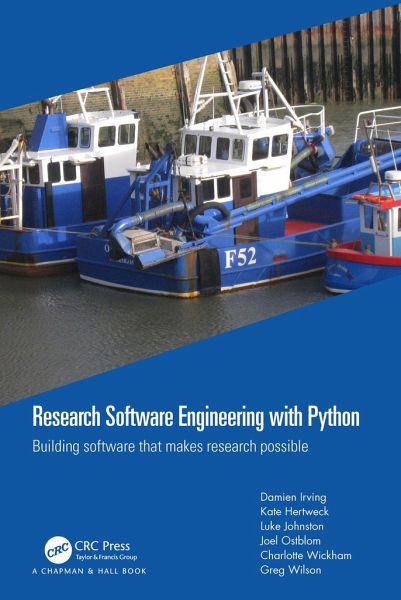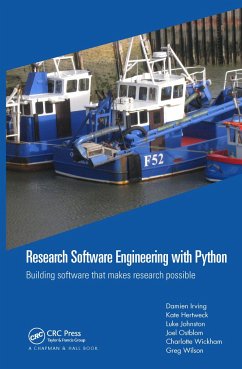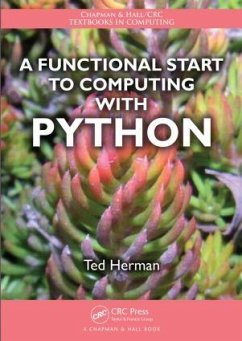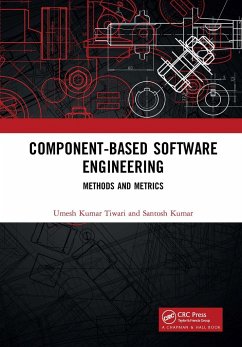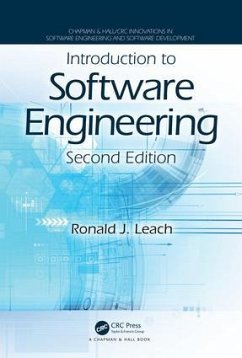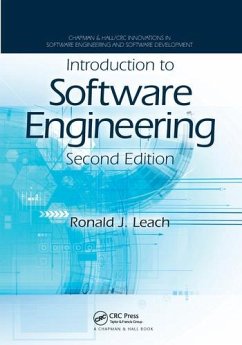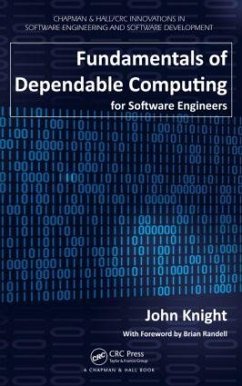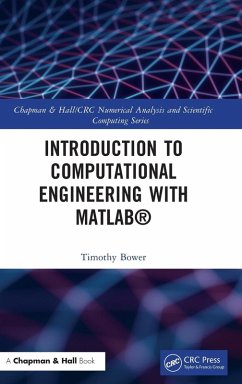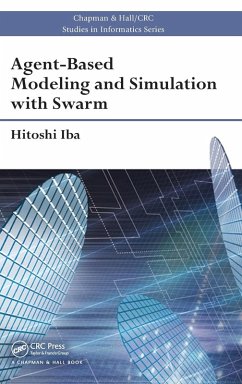Research Software Engineering with Python
Building software that makes research possible
Versandkostenfrei!
Versandfertig in 1-2 Wochen
Weitere Ausgaben:

PAYBACK Punkte
55 °P sammeln!




Based on the practical experiences of its authors, who collectively have spent several decades teaching software skills to scientists, this book covers everything graduate-level researchers need to automate their workflows, collaborate with colleagues, and ensure that their results are trustworthy.
Dr. Damien B. Irving is post-doctoral researcher in climate science at the University of New South Wales living in Hobart, Tasmania. With a strong interest in data science education and open/reproducible research, Damien is involved in The Carpentries community as an instructor, lesson author and Regional Coordinator for Australia, is an Associate Editor with the Journal of Open Research Software, and is currently the Global Coordinator for the Research Bazaar, a worldwide festival promoting the digital literacy emerging at the center of modern research. Dr. Kate L. Hertweck is a scientist and educator who endeavors to uphold core values like diversity/equity/inclusion, accessibility of information, and learning over knowing. They currently lead training and community efforts to support biomedical researchers at Fred Hutchinson Cancer Research Center in Seattle, Washington. Kate is an instructor and trainer for the Carpentries and has also participated in that group's lesson development/maintenance and community governance. Dr. Luke Johnston is a diabetes epidemiologist working at the Steno Diabetes Center Aarhus in Denmark. He is passionate about educating researchers on modern computing tools and skills, having taught many Carpentry workshops as well as creating and instructing several intensive courses teaching computing skills and analytic reproducibility to diabetes researchers. When he isn't teaching or doing research, he is building software tools to automate common research workflows and tasks. Dr. Joel Ostblom is a post-doctoral teaching fellow in the Master's of Data Science program at the University of British Columbia in Vancouver, B.C. He has co-created or led the development of several courses and workshops at the University of Toronto and the University of British Columbia. Joel cares deeply about spreading data literacy and excitement over programmatic data analysis, which is reflected in his contributions to open source projects and data science learning resources. Dr. Charlotte Wickham is a data scientist and educator, who teaches in the Statistics Department at Oregon State University, as well as operating her own consulting and training business. She loves to help people build their data super powers in the R programming language. She currently lives in Corvallis, Oregon, but originally hails from New Zealand. Dr. Greg Wilson is a programmer and educator based in Toronto, Ontario, and was the co-founder and first Executive Director of Software Carpentry. A member of the Python Software Foundation, Greg has written or edited over a dozen books and received ACM SIGSOFT's Influential Educator Award in 2020.
Produktdetails
- Verlag: Chapman and Hall/CRC
- Seitenzahl: 530
- Erscheinungstermin: 6. August 2021
- Englisch
- Abmessung: 234mm x 156mm x 28mm
- Gewicht: 796g
- ISBN-13: 9780367698324
- ISBN-10: 0367698323
- Artikelnr.: 62115560
Herstellerkennzeichnung
Libri GmbH
Europaallee 1
36244 Bad Hersfeld
gpsr@libri.de
Für dieses Produkt wurde noch keine Bewertung abgegeben. Wir würden uns sehr freuen, wenn du die erste Bewertung schreibst!
Eine Bewertung schreiben
Eine Bewertung schreiben
Andere Kunden interessierten sich für



